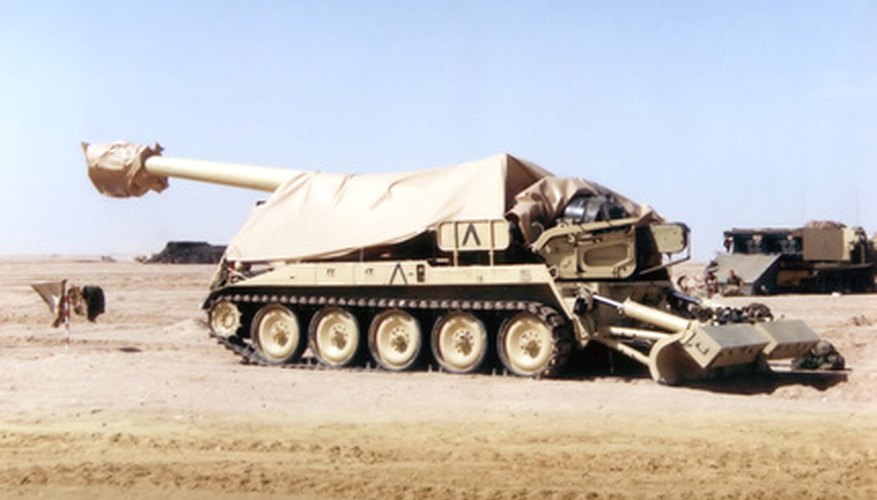Democracy may be struggling to take hold in the Middle East, but capitalism is already thriving there: In an effort to boost manpower and cut costs, the Department of Defense relies heavily on private contractors to provide support services to military personnel. These contractors may perform duties as widespread as meal and base support services to security duties and intelligence matters. Because of the variety of tasks performed by contractors, their salaries vary greatly.
Average Salary with Security Clearance
Because many of the positions needed in Iraq and Afghanistan directly support military or intelligence operations, the need for contractors with valid security clearances is high in the Middle Eastern combat zones, and workers with security clearances may earn the highest salaries in the private sector. The average salary for private contractors is £48,074 as of May 2009, according to Defense News. The average private government contractor with a security clearance earns about £13,000 more each year than a government employee with the same clearance.
- Democracy may be struggling to take hold in the Middle East, but capitalism is already thriving there: In an effort to boost manpower and cut costs, the Department of Defense relies heavily on private contractors to provide support services to military personnel.
- Because many of the positions needed in Iraq and Afghanistan directly support military or intelligence operations, the need for contractors with valid security clearances is high in the Middle Eastern combat zones, and workers with security clearances may earn the highest salaries in the private sector.
General Defense Contractor Salaries
The average advertised annual salary for defence contractors is £41,600 as of January 2011, according to Simply Hired. These jobs represent positions where security clearances are both necessary as well as unneeded. The site also indexes contractor positions outside of combat zones, such as personnel used domestically to help build military infrastructure, such as information technology contract staff and other base support personnel.
Contractors in Iraq
As of July 2010, there were nearly an equal number of Department of Defense contractors as uniformed military personnel in Iraq, with 95,461 contractors and 95,900 troops, according to the Congressional Research Service. The number of contractors and troops has remained in relative parity since 2007. Of the Defense Department contractors in Iraq in 2010, 24,719 were American citizens.
Contractors in Afghanistan
The Department of Defense employs more civilian contractors than military personnel stationed in Afghanistan as of March 2010, according to the Congressional Research Service, with 112,092 contractors supporting 79,100 uniformed soldiers. The percentage of contractors present in the conflict, 69 per cent of the Department of Defence's workforce, is the highest proportion of civilian labour in an armed conflict in the United States' history. Of the 112,000 contractors in Afghanistan, 16,000 were American citizens, with local nationals providing 70 per cent of the Department of Defence's civilian workforce.
- As of July 2010, there were nearly an equal number of Department of Defense contractors as uniformed military personnel in Iraq, with 95,461 contractors and 95,900 troops, according to the Congressional Research Service.
- Of the 112,000 contractors in Afghanistan, 16,000 were American citizens, with local nationals providing 70 per cent of the Department of Defence's civilian workforce.
Risk Factors
Although many defence contractors are lured into combat-duty service because of the high pay and signing bonuses that go along with Department of Defense contracts, those earnings come at a price. The first six months of 2010, more civilian contractors, 250, died in Iraq and Afghanistan than military personnel, which suffered 235 casualties in the same period, according to Pro Publica's T. Christian Miller. That six-month period was the first time in the Department of Defence's history that more contractors died than military personnel in a combat situation.
